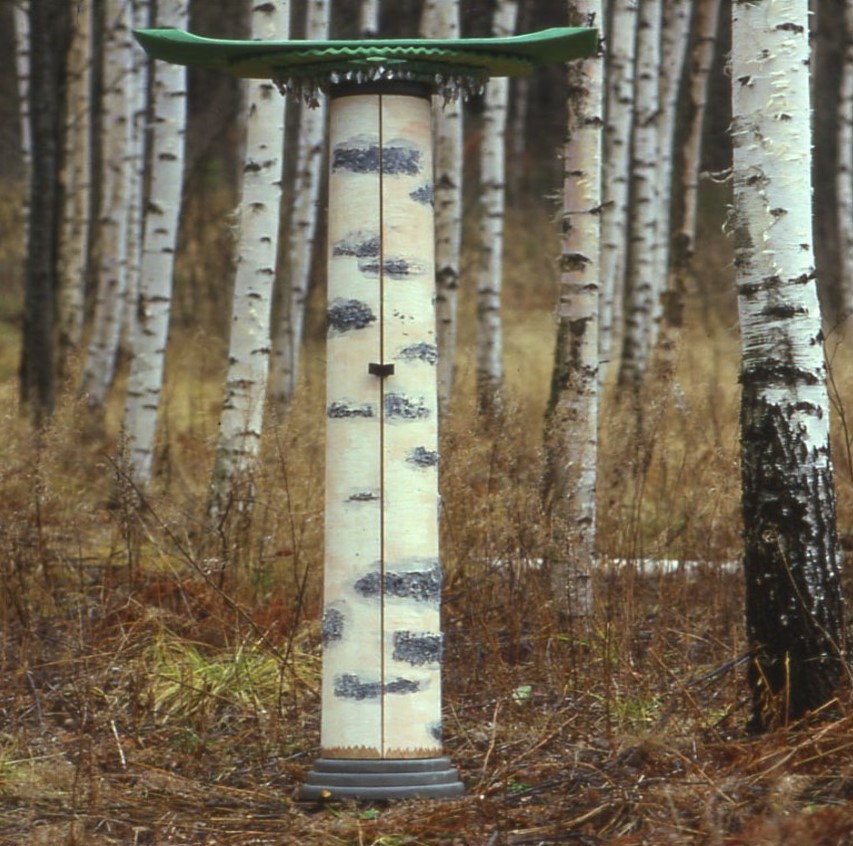Aarup 1960 and the poetics of materials
DOI:
https://doi.org/10.7577/formakademisk.4638Keywords:
materials, modernism, post-modernism, meaning, arts basedAbstract
All design has its own conditional modes of expression; however, these are realised through the maker’s sense of the possibilities of materiality. This essay was inspired by a reclaimed piece of 1960s furniture designed in the modernist idiom, and is based upon autobiographical experiences, original works from own and contemporary aesthetic practices, and associated thoughts in the present. A completely new artistic expression was developed, which questioned the strict, use-defined style ideals and let shape reveal other values and statements than function. The intention of this essay is to put into words some of the cognitive processes in which creativity, critical reflection and the senses’ experience-based insights may bring up something new. In creative work, the goal is not to reach a single result; every little discovery made by examining something specific could open up new worlds.
References
Andersson, D. T. (2001). Tingenes taushet, tingenes tale [The silence of things, the speech of things]. Solum.
Austring, B. D. & Sørensen, M. (2006). Æstetik og læring: grundbog om æstetiske læreprocesser [Aesthetics and learning: primer on aesthetic learning processes]. Reitzel.
Eliassen, K. O. (2008). Tingenes tale. Epistemologi, estetikk og eksistens hos Michel Foucault [The speech of things. Epistemology, aesthetics and existence in Michel Foucault]. Norsk filosofisk tidsskrift, 43(4), 272-283. https://doi.org/10.18261/ISSN1504-2901-2008-04-02
Landro, J. H. (2016). Bård Breivik om Bård Breivik. In J. Veiteberg & R. Leppiniemi (Eds.), Bård Breivik. I'd love the key to the master lock (Vol. I). Fagbokforlaget.
Liv Mildrid Gjernes. (2019). In Store norske leksikon [The large Norwegian encyclopedia]. Retrieved November 6, 2019 from https://snl.no/Liv_Mildrid_Gjernes.
Loos, A. (1908). Ornament und Verbrechen [Ornament and crime]. https://de.wikisource.org/wiki/Ornament_und_Verbrechen
May, R. (1975). The courage to create. Norton.
Norberg-Schulz, C. (1996). Stedskunst [The art of making places]. Gyldendal.
Siesing, A. (2015). Svenska möbler: folkhemsform i ull, jakaranda, furu och bok 1949-1970 [Swedish furniture: folk home form in wool, jacaranda, pine and beech 1949-1970]. Bokförlaget Atlantis.
Svendsen, L. F. H. (2000). Kunst: en begrepsavvikling [Art: a concept settlement]. Universitetsforlaget.
Veiteberg, J. (2004). Barbariske tendensar [Barbaric tendencies]. Syn og segn, (1), 77-81.

Downloads
Published
How to Cite
Issue
Section
License
Copyright (c) 2021 Liv Mildrid Gjernes

This work is licensed under a Creative Commons Attribution-NoDerivatives 4.0 International License.
Authors who publish with this journal agree to the following terms:
- Authors retain copyright and grant the journal right of first publication with the work simultaneously licensed under a Creative Commons Attribution 4.0 License that allows others to share the work with an acknowledgement of the work's authorship and initial publication in this journal.
- Authors are able to enter into separate, additional contractual arrangements for the non-exclusive distribution of the journal's published version of the work (e.g., post it to an institutional repository or publish it in a book), with an acknowledgement of its initial publication in this journal.
- Authors are permitted and encouraged to post their work online (e.g., in institutional repositories or on their website) prior to and during the submission process, as it can lead to productive exchanges, as well as earlier and greater citation of published work (See The Effect of Open Access).
- The author(s) must manage their economic reproduction rights to any third party.
- The journal makes no financial or other compensation for submissions, unless a separate agreement regarding this matter has been made with the author(s).
- The journal is obliged to archive the manuscript (including metadata) in its originally published digital form for at least a suitable amount of time in which the manuscript can be accessed via a long-term archive for digital material, such as in the Norwegian universities’ institutional archives within the framework of the NORA partnership.
The material will be published OpenAccess with a Creative Commons 4.0 License which allows anyone to read, share and adapt the content, even commercially under the licence terms:
This work needs to be appropriately attributed/credited, a link must be provided to the CC-BY 4.0 licence, and changes made need to be indicated in a reasonable manner, but not in any way that suggests that the licensor endorses you or your use.



